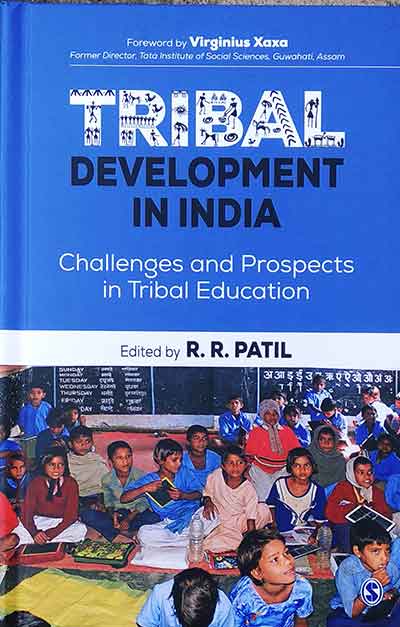
The term tribe or tribal is not defined anywhere in the Indian Constitution. According to Article 342, Scheduled Tribes (ST) are ethnic communities that are notified by the President of India. India’s tribes are not part of the traditional Hindu caste structure. They are more similar to the “indigenous” or “native people” in other parts of the world.
Tribal communities in India aren’t the same everywhere. Some 574 individual groups make up India’s tribal population. Different tribal groups are at different levels of social and economic development.
Realizing that Scheduled Tribes are one of the most deprived and marginalized groups with respect to education, a host of programs and measures were initiated since independence. Despite these initiatives, tribal development – particularly tribal education has not reached the desired levels. The high dropout rate among tribal students is a glaring example of the challenges that need to be addressed urgently if we are not intent upon leaving this vast segment of the population to fend for itself.
The fact that India has the single-largest tribal population in the world, constituting 8.6% of the population makes for a solemn case of upliftment via education. Even today, a considerable proportion of tribal children remain outside the school system.
Edited by Prof. RR Patil, ’Tribal Development in India: Challenges and Prospects in Tribal Education’ discourses all those urgent issues in a comprehensive manner.
The author is presently a Professor in the Department of Social Work, Jamia Millia Islamia, New Delhi. An enthusiast in research and publications, he has authored/edited two more books: ‘Dalit Christians in India’ and ‘Empowering Dalits: Non-Governmental Organizations in Western India. The present book mainly deals with Ashram Schools.
As the blurb says, ‘Tribal development is one of the most important yet underperforming initiatives of the Indian government. For any effort in this direction to succeed, an effective tribal educational program is necessary. However, major gaps in the implementation of this program, along with factors such as corruption and political interference, have contributed to severe malfunctioning and ineffectiveness of the Tribal Ashram schools, a residential school system. It is essential to understand these gaps from policy, design, funding, management, monitoring, and evaluation perspectives for ensuring effective service delivery to tribal learners. ‘
Divided into twenty chapters with contributions from across the academic world, the book meaningfully throws light on different aspects of tribal education in India and the present state of affairs. The contributors include academicians and professionals belonging to diverse domains: social work, education and administration. This makes the book exhaustive.
The chapters in the 300- plus page book are wide-ranging : Sociological Analysis of Educational Experiences of Adivasi Children(Pradyumna Bag), Ethnocentrism in Education: Effects of Hidden Curriculum on Tribal Students(Bipin Jojo), Status of Tribal Ashram Schools in Maharashtra (Saumya Deol and R. R. Patil), Language as Instrument of Exclusion and Inclusion in Tribal Educational Development( Dhaneswar Bhoi) Living Conditions, Learning Status and Educational Performance of Tribal Students (S. N. Tripathy), Insights on High Dropout Rates among Katkari Tribal Children in Maharashtra (Chipemmi Awung Shang and R. R. Patil).
There are also topics on Education of Scheduled Tribes in Residential Schools in Manipur (Prakash Chandra Jena), Status and Functioning of Tribal Ashram Schools (R. Vasundhara Mohan), Educating Tribal Children: Issues (Noorjahan Kannanjeri and Alkha Dileep), Balancing Indigenous Culture and Formal Education: Ashram Schools in Kerala(Rajashri Tikhe and Buveneswari Suriyan), Ashram School Codebook: Framework for Qualitative Management (Saurabh Katiyar), Centralized Kitchen: Providing Nutritious and Hygienic Meals to Tribal Students (Muhammed Shafi C. T. and R. R. Patil ), Indira Gandhi Memorial Model Residential School (IGMMRS) in Malappuram, Kerala: A Case Study (Sonal Shivagunde), Revisiting Policies and Need for Reform in Tribal Education (Naresh Kumar ), Rethinking Policy Design and Reforms for Tribal Education in India (Bibekananda Nayak), Inclusive Education Policy for Tribal Ashram Schools in Odisha( Mrityunjay K. Singh), Ashram Schools and Education of Tribal Children in India: A Policy Perspective (D. K. Panmand) and Government Ashram School: Micro Planning (Vetukuri P. S. Raju).
With a foreword by Virginius Xaxa, former director TISS, Guwahati, the book says that even as successive governments have taken steps for the development of the STs, at the implementation level, schemes and programs pertaining to tribal development suffer from administrative and governance issues thus rendering the government’s interventions ineffective. It is the contention of the author that the role and contribution of the government, policymakers, administrators, voluntary organizations, tribal parents, and local communities are equally essential for effective implementation and sustenance of the ashram school schemes in India.
The book is an in-depth presentation of the multi-pronged effort towards the educational development of India’s tribal population. The viewpoints shared in the volume will be useful for all stakeholders involved in tribal empowerment through education.
Tribal Development in India
RR Patil Ed.
SAGE publications
New Delhi
2020
Bhaskar Parichha is an independent journlist
SIGN UP FOR COUNTERCURRENTS DAILY NEWSLETTER
















































